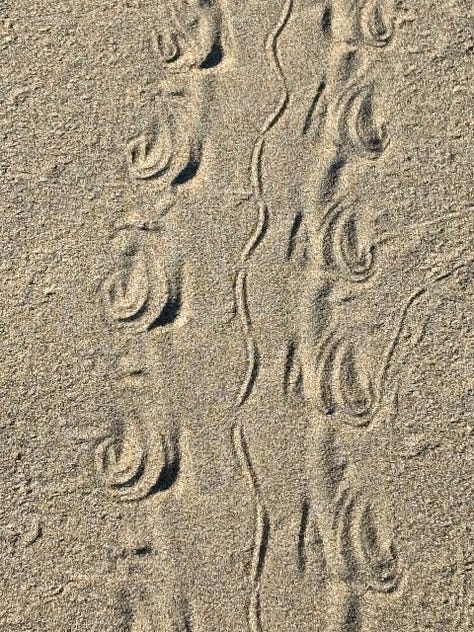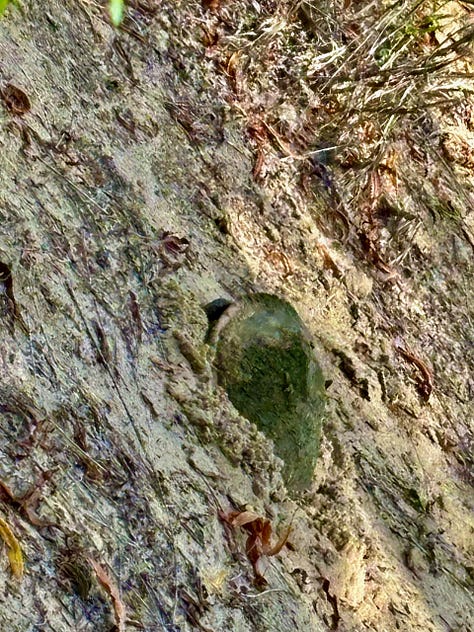Lower Mississippi River Dispatch No. 941 "Voice of the Lower Mississippi River" Memphis, TN ~ Wilson, AR ~ Clarksdale, MS ~ Vicksburg, MS Quapaw Canoe Company ~ Celebrating 25 Years of Service ~ ~Winner of the SBA 2024 Small Business of the Year Award~
When the Waters Return
We launch our Voyager canoes from on a beautiful Thursday afternoon with the one of the tallest buildings in Mississippi in our rear view mirror. The River is up and moving fast as small and large pieces of wood-laden debris ride the waves of water while some twist in the eddy. The canoe feels wonderfully balanced reacting instantly to the adjustable strokes of my guide paddle. Like a horse that's rested and well fed, I'm efficient and powerful, moving swiftly on a rising, but soon to crest, incredible body of water. Two large towboats hug the inside of the bend trying to catch the slow compromised water that's manipulated by a complex configuration of rock structures 15 feet below the surface. I let them know, by radio, where we were and that we would stay in the fast water out of the way. After 30 minutes civilization disappears as we meander around the bend. We see in the distance, some of the rarest, wildest archipelago of islands on the Lower Mississippi River.
For the last two years the Lower Mississippi River has been in drought conditions. These islands have been connected by large desert-like dunes that look flat from a distance, but has such intricate topography that only water can create. With the water nearing flood stage these braided channels open, giving our canoes access to places barely touched by humans and full of wildlife. We see a beautiful beach in the distance, in the back channel. Large Whitetail deer take off as we approach. The water itself is confused by rock configurations below, used to keep the water flowing swiftly towards the navigational channel. Makes for a small challenge, but we hit it precisely and coasted through the narrow opening.






We find a secluded beach with a spectacular gravel and fossil bed with a 2 ft stream separating numerous humps of sand. These beds are rarely reached by treasure hunters and river enthusiasts. We land our canoes and the team spreads out in different directions looking for optimum camping sites. I see a meadow of tall green grasses surrounded by a fortress of tall Cottonwoods, with a beautiful oasis of sand, bordered by Mulberry trees, Dewberries, and Blackberries. As I finish setting up my tent, I sit down in my Crazy Creek chair, and begin to write this blog. A long Rat snake sticks its head out of the berry patch. It knows I'm here, flickering its tongue in various directions, but can't determine my location because of the wind direction and my lack of sudden movements. Throughout my life, I've always been aware of the danger of snakes, but I've always appreciated my ability to locate them first and admire their amazing anatomy. I can see its body laid out in the underbrush- by the size it must be a female, her body as long as I could see through the Dewberry patch. I try to take a picture, but her unique camouflage couldn't be deciphered by my IPad camera. Again and again, I take the picture, but when I look at the picture, I can't see her. I can't break her natural defensive mechanism. You would have to know she's there to see her in the picture. Unfortunately, I make a sudden jesture and she disappeared down a hole, her body taking forever to vanish from the surface. She must have some babies below, so I'll make it a point not to stress the family out. I'll find another patch to forage, but for now we are neighbors until tomorrow.
The migratory birds are in full fledge breeding and feeding mood. Mississippi Kites soar high in the sky ambushing large insects like dragon flies and cicadas. Two Orioles feed in the mulberry tree, wasting half its bounty, as berries fall to the floor, but feed the snakes, turtles, mammals, and insects below. Natures cool. Sand pipers and Kildeer prance up and down the edge of the gravel filled sandbars. One female Kildeer sitting on some eggs in the gravel bed faked a broken wing and ran away to distract us from her nests. I've read about this, but it's my first time seeing it in the wild. An unusual sighting of a pair of shore birds, the American Avocet, sweep their curve beaks in the shallows in a figure eight motion, searching for crustaceans and aquatic insects. They usually frequent the coastal waters of the west, but perhaps the drought in the west has forced them to the Mississippi River. Male Least terns hover over the shallow pools practicing fishing techniques before the females arrive from Central and South America. They dive successfully, but have to fight off future opponents mid flight. Belted Kingfishers fly from branch to branch in the flooded timber. A pair of Pileated woodpeckers hang upside down like primates on the mulberry tree selecting the darkest juicest plumpest berries. Warblers, Orioles, Red Wing Black Bird, Kingbirds, and Scarlet Tanagers join the bountiful harvest. The symphony continues in the canopy of the trees throughout the day. This is a birder's paradise.
The last two years have been very stressful to wildlife. With replenished wetlands, estuaries, swamps, oxbow lakes and creek beds, life has ignited along the lower Mississippi River. The Spring rise triggers fish to spawn, insects like mosquitoes to propagate, amphibians to gather in small ponds forming mate balls, reptiles like turtles laying millions of eggs, and mammals sequencing the birth of their offspring, with the rise, because it's the time of plenty. Many hunters and outdoor enthusiasts in the Delta talk of unusually small White tail deer during the drought, due to the lack of flora and fauna, which is the staple of their diets. Males are mistaken for females because of immature antlers and low populations of turkey and rabbits. But there are benefits of drought. Young Willows, Cottonwoods, and Sycamores have a chance to fortify their roots in the fertile mud deep underneath the sand, giving themselves the opportunity to withstand the next high water. Unfortunately, only the strongest life forms of their species survived the drought, making them fortified to thrive in an unforgiving ecosystem, keeping the balance, and keeping us all alive. -Mark River
About Mark River: Mark River Peoples is chief of operations, and chief guide and youth leader for the Quapaw Canoe Company. He produced and narrated a podcast called "May the River be With You." He is southern leader of the 1Mississippi Program, which connects people who care about rivers with the people who make decisions about rivers. He is on the steering committee of the Mississippi River Network. During the summer heat he is wood-shopping at Quapaw Canoe Company for construction of the next big canoe, and in preparation for a busy Fall 2024 season guiding adventures and explorations of the Lower Mississippi River. His blog writing is inspired by his work on the Big River -- and its many tributaries such as the Yazoo, the Big Sunflower and the Arkansas Rivers. Mark River grew up hunting and fishing along the river with his father near St. Louis, MO. After attending Central Missouri State University, and becoming defensive back with the New York Giants, Mark left a career in professional football for the river. Mark is a writer for the Lower Mississippi River Dispatch and shares his intimate & nature-filled musings about river life in presentations and online platforms. When not on the water, Mark mentors Mississippi Delta youth and educates them on the importance of the protection and preservation of our national treasure for generations to come. He himself is a tributary to his community, like the stream is to the big river. Mark works hard on changing the perception of our great River and its tributaries. Through river trips, cleanups, and workshops, Mark’s goal is overall systemic health of the Mississippi River.
mark river shows bighead carp to clients before throwing back in water (lower arkansas river, near mississippi confluence, photo by john ruskey











Love the Mark River writings!!!
Why am I crying?